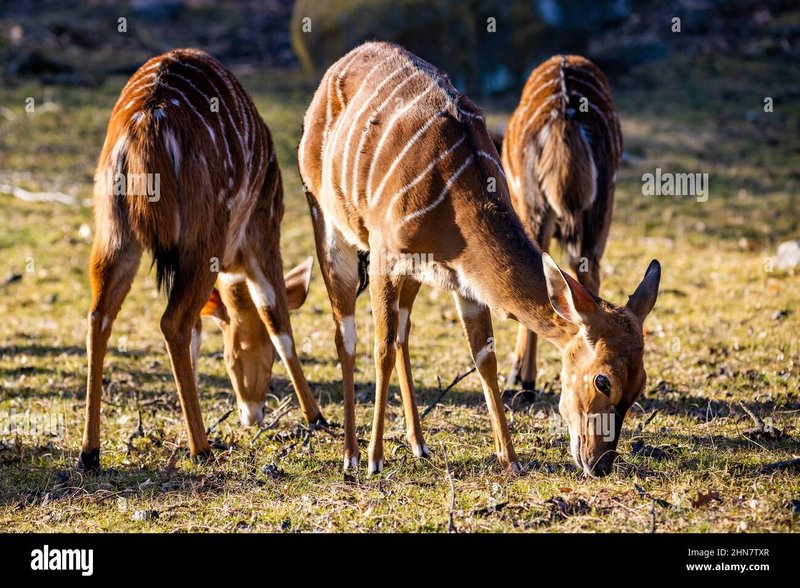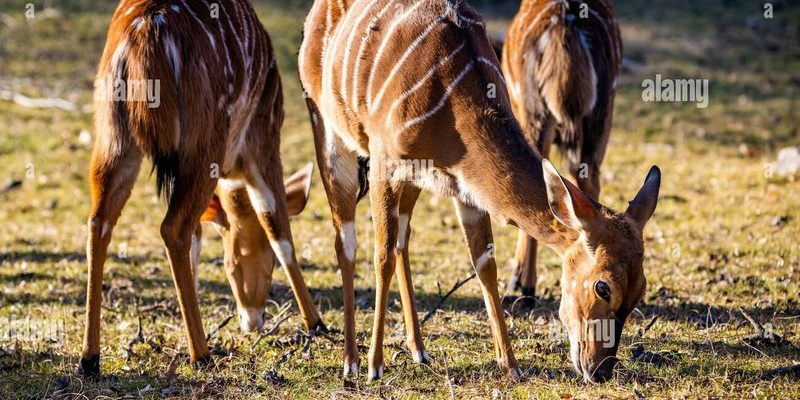
Understanding how to interact with a nyala is essential for ensuring both your safety and the animal’s wellbeing. Just like knowing how to navigate a new city can make your visit more enjoyable, being prepared for a wildlife encounter can enrich your experience in nature. So let’s dive into what you need to know if you find yourself face-to-face with this captivating antelope.
Where Do You Find Nyala?
Nyala are native to the eastern regions of southern Africa, particularly in savannahs and wooded areas. They prefer environments with dense thickets and cover, making it easy for them to hide from predators. These animals are quite adaptable, so you might find them near bushes, grasslands, and even in more urbanized areas where there’s greenery.
You might be wondering about their behavior when you’re hiking or exploring. Nyala are most active during the cooler parts of the day—dawn and dusk—when they venture out to feed on leaves, fruits, and grasses. So, if you’re planning an early morning or late evening hike, keep your eyes peeled. The chances of spotting a nyala increase significantly during these times.
Understanding Nyala Behavior
Nyala are known for their shy and timid nature. Unlike some larger animals, they’re not likely to approach humans. Instead, they will probably observe you from a distance. This caution is a protective mechanism, as they’re prey for larger predators, like lions and leopards.
If you see a nyala, watch its body language. These animals communicate a lot with their posture. If it seems relaxed, it may continue munching on leaves. However, if the nyala raises its head and looks alert, it’s sensing danger—either from you or something else nearby. Understanding these cues can help you gauge how to proceed.
What Should You Do If You Encounter a Nyala?
Encountering a nyala can be a thrill, but it’s crucial to approach the situation with caution. Here’s what to do:
- Stay Calm: Sudden movements or loud noises can spook the animal.
- Observe from a Distance: Enjoy the moment but maintain a respectful distance. Remember, you’re in their territory.
- Take Photos Respectfully: If you want to capture a photo, make sure it’s from a distance. Use a zoom lens if possible.
- Don’t Feed Them: This is very important. Feeding wild animals can lead to dependency on humans and alter their natural behavior.
By respecting their space, you’re not just keeping yourself safe; you’re also protecting the nyala and ensuring it continues to thrive in its natural environment.
How to React If a Nyala Approaches You
It’s rare for a nyala to become aggressive, but if one gets too close for comfort, here’s how to handle it:
1. Remain Still: Your first instinct might be to back away, but sudden movements can startle them.
2. Back Away Slowly: If the nyala approaches, turn slowly and calmly retreat. Avoid turning your back, as it might perceive this as a sign of weakness.
3. Avoid Eye Contact: Direct eye contact can be perceived as a threat. Instead, keep the animal within your field of vision without staring directly at it.
4. Don’t Corner the Animal: If a nyala feels trapped, it may react defensively. Make sure it has an escape route.
Keeping your cool in these situations not only protects you but also helps maintain the balance of wildlife interactions.
Are Young Nyala Different from Adults?
Young nyala, or calves, are particularly vulnerable, and their behavior is quite different from adults. They tend to stay hidden in dense vegetation while their mothers graze. If you see a calf alone, it’s best to stay away. The mother will likely be nearby, keeping watch from a distance.
Young nyala are more playful and curious than their adult counterparts. If they feel safe, they might approach you or their surroundings with a little more boldness. It’s a cute sight, but always remember, the mother is protective and can be aggressive if she thinks you’re a threat to her young.
Tips for a Safe and Enjoyable Wildlife Experience
Having a great time in nature means being prepared for anything. Here are some tips for ensuring your wildlife experience remains safe and enjoyable:
– Research your destination: Understand the wildlife in the area, including nyala behavior and habitat.
– Go with a guide: If you’re in a national park or reserve, consider hiring a guide. They know the terrain and can provide valuable insights.
– Bring binoculars: Instead of getting too close, use binoculars for a better view while respecting the animals’ space.
– Stay aware of your surroundings: Always be alert to any wildlife nearby, and be aware of potential hazards like rough terrain or other animals.
By preparing in advance, you can embrace the beauty of nature while ensuring your safety and the wellbeing of its inhabitants.
Final Thoughts on Nyala Encounters
Encountering a nyala in the wild can be a magical experience, filled with wonder and awe. Just remember that these animals are not toys; they’re wild creatures deserving of respect and space. By following the guidelines outlined here, you can enjoy observing these magnificent animals while ensuring everyone remains safe.
So next time you’re out exploring the natural world, keep your eyes peeled for a glimpse of a nyala. You’ll not only be rewarded with a fantastic sight but also a deeper appreciation for the beauty that wildlife brings to our lives. Respect the animals, cherish the moments, and let nature work its wonders.

